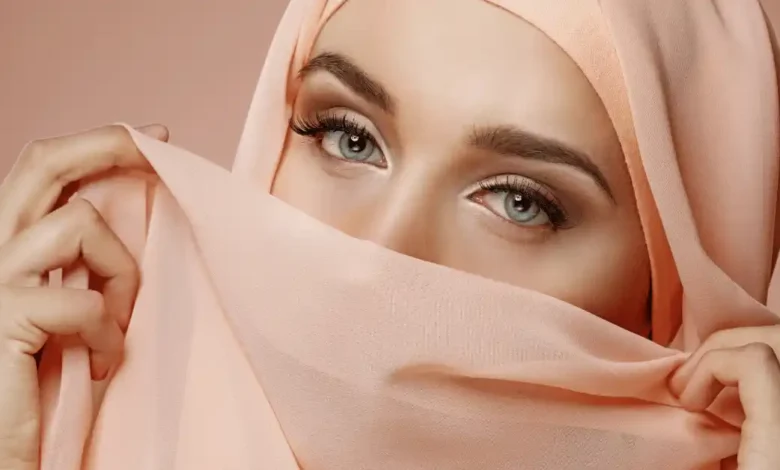The Essence of Hijab Reveal: Cultural Practices and Religious Beliefs

The essence of hijab reveal encompasses a rich tapestry of cultural practices and religious beliefs that shape the experiences of Muslim women worldwide. Understanding what the hijab represents, why it is worn, and what it means to reveal it provides valuable insights into its significance in both personal and societal contexts. This comprehensive guide delves into the multifaceted nature of the hijab, exploring its historical roots, religious mandates, cultural variations, and the contemporary conversations surrounding its practice.
Understanding the Hijab
What is Hijab?
The hijab is a traditional headscarf worn by many Muslim women as a symbol of modesty and privacy. It is derived from the Arabic word “hijab,” meaning “barrier” or “partition.” The practice of wearing the hijab is deeply rooted in Islamic teachings and cultural traditions, serving as a manifestation of faith and identity.
Religious Significance of Hijab
In Islam, the hijab is not merely a piece of clothing but a profound expression of faith. It aligns with the principles of modesty, humility, and devotion to God. The Quran, the holy book of Islam, and Hadiths, the sayings of Prophet Muhammad (PBUH), provide guidance on the importance of modesty, which includes the practice of wearing the hijab.
Cultural Practices Surrounding the Hijab
Historical Context of the Hijab
The historical context of the hijab reveals its evolution over centuries. Originally, it was not only a symbol of modesty but also a status symbol in certain cultures. Over time, the hijab has transcended its traditional roots, adapting to various cultural norms and societal changes.
Cultural Variations in Hijab Practices
- Middle East and North Africa (MENA): In many MENA countries, the hijab is a common cultural practice, with variations such as the niqab (full-face veil) and abaya (full-body cloak) also prevalent.
- South Asia: In countries like Pakistan and India, the hijab often takes the form of a dupatta (scarf) or burqa (full-body covering), reflecting regional styles and customs.
- Western Countries: Muslim women in Western countries may wear the hijab as a statement of identity and faith, navigating the balance between cultural integration and religious adherence.
The Concept of Hijab Reveal
What is Hijab Reveal?
Hijab reveal refers to the act of unveiling or removing the hijab, either temporarily or permanently. This concept can arise from personal, social, or political motivations and has become a topic of significant discussion in contemporary society.
Reasons for Hijab Reveal
- Personal Choice: Some women choose to reveal their hijab as a personal decision, reflecting changes in their beliefs, lifestyle, or personal comfort.
- Societal Pressures: In certain societies, women may face pressure to unveil due to secular norms or anti-Muslim sentiments.
- Political Factors: Political climates, such as laws banning religious symbols, can also influence the decision to reveal the hijab.
The Impact of Hijab Reveal
Religious Implications
Revealing the hijab can have profound religious implications. For many, it is a deeply personal decision that requires careful consideration of their faith and beliefs. Some may feel a sense of loss or guilt, while others may experience a newfound sense of freedom and personal expression.
Social and Cultural Repercussions
- Community Reactions: Within Muslim communities, the decision to reveal the hijab can lead to varying reactions, from support and understanding to criticism and exclusion.
- Identity and Belonging: The hijab often serves as a marker of identity. Revealing it can impact one’s sense of belonging and how they are perceived within their cultural and social circles.
Contemporary Conversations on Hijab Reveal
Feminism and the Hijab
The intersection of feminism and the hijab is a complex and nuanced topic. For some Muslim women, wearing the hijab is an empowering act of reclaiming their bodies and resisting objectification. Conversely, for others, unveiling is seen as a liberation from traditional constraints.
Media Representations
Media representations of hijab and hijab reveal play a significant role in shaping public perceptions. Positive portrayals can foster understanding and respect, while negative depictions can perpetuate stereotypes and prejudice.
Frequently Asked Questions
What does hijab reveal mean?
Hijab reveal refers to the act of removing or unveiling the hijab, either temporarily or permanently, often influenced by personal, social, or political factors.
Is it permissible in Islam to reveal the hijab?
The permissibility of revealing the hijab varies among scholars and cultural contexts. It is a personal decision that should consider religious beliefs, societal norms, and individual circumstances.
How do cultural practices influence the hijab?
Cultural practices significantly influence the styles, significance, and acceptance of the hijab. Different regions have unique interpretations and customs surrounding the wearing and revealing of the hijab.
What are the social implications of hijab reveal?
Social implications of hijab reveal can include changes in community perception, personal identity, and social belonging. Reactions can range from support to criticism depending on the cultural and societal context.
How can media representation impact views on hijab reveal?
Media representation can shape public perceptions by either fostering understanding and respect or perpetuating stereotypes and prejudice. Positive portrayals can help normalize and respect diverse choices regarding the hijab.
Conclusion
The essence of hijab reveal is a complex interplay of cultural practices and religious beliefs. By understanding its historical roots, cultural variations, and contemporary conversations, we can appreciate the multifaceted nature of this practice. Whether through wearing or revealing the hijab, the ultimate goal is to honor personal faith, identity, and the values that define individual experiences.
4o



